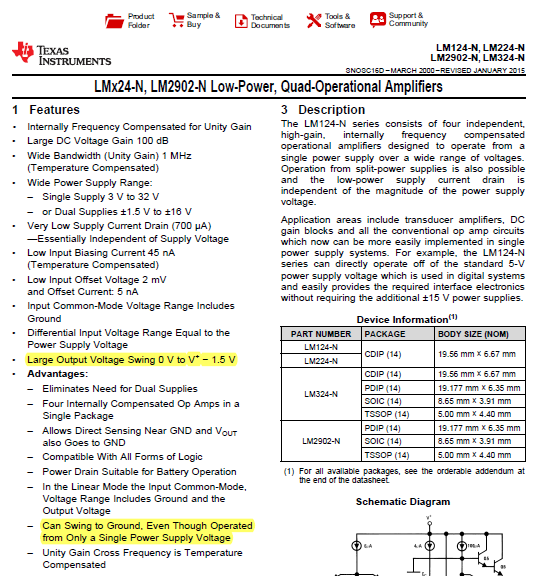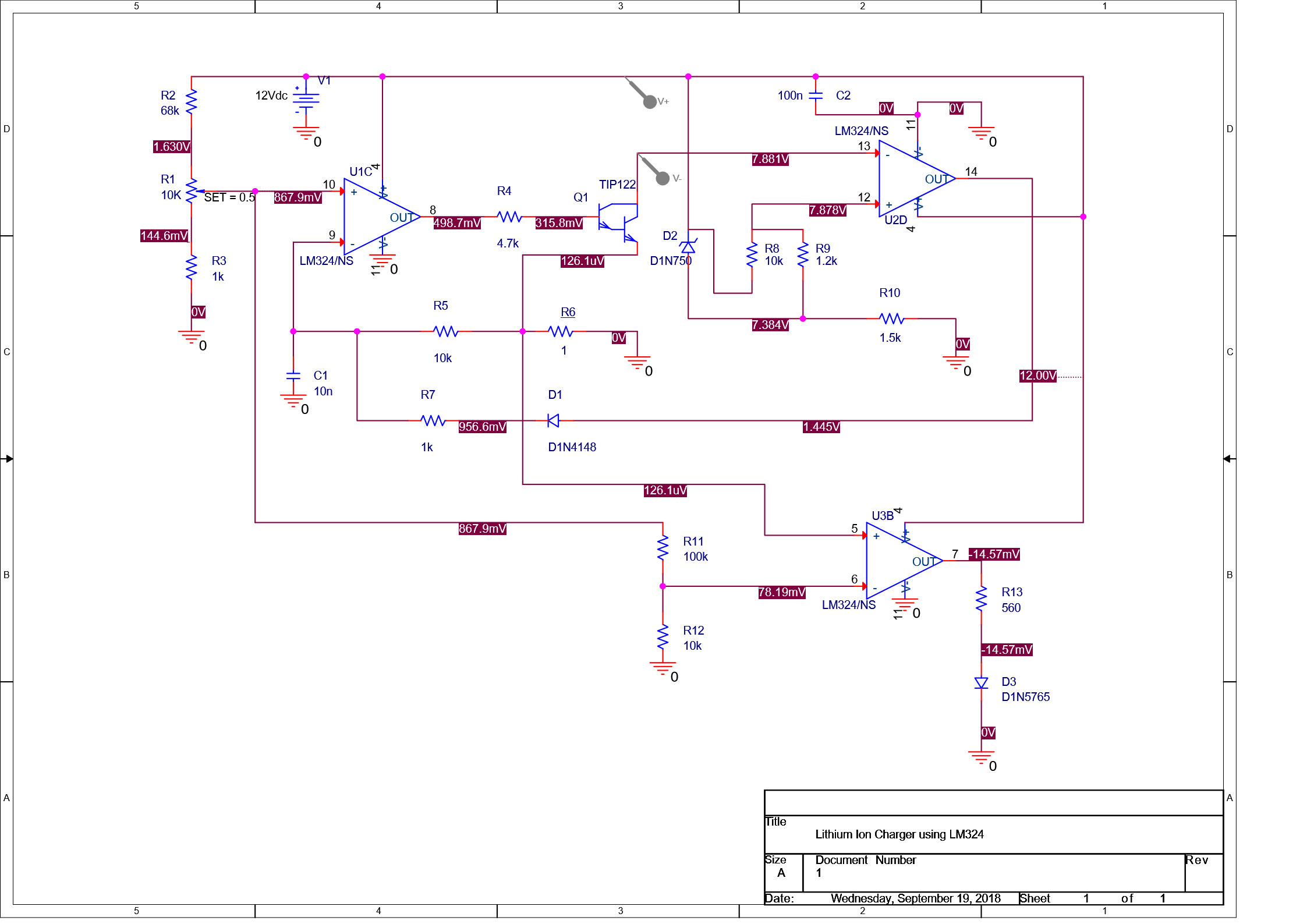Making a Li-ion battery charger
I had many Lithium-ion batteries lying around from obsolete devices that could be potentially repurposed to power small projects.
This project is based on @pinomelean’s work out there on Instructables: Li-ion Battery Charging It’s a great guide that well explains the whole process of charging and the circuit is realised using easily available components.
So what did I do? I realised the circuit using a rail to rail opamp and just one transistor (TIP122) => less complexity and less power loss. (as clearly suggested by @pinomelean)
Checking the datasheet of the LM324, I found that it is indeed a rail to rail opamp.

So I removed the 2.5V virtual ground in the original circuit and tweaked few resistors here and there to come up with this reduced design.
Just to make things sure I validated the new circuit in PSPICE and it was looking great.

Download schematic and PSPICE files here Download (_If at all you have a power supply with a higher current rating you can redo the design of opamp U1 in the circuit to get a higher charging current _)
This circuit provides a max. reference of ~4.1V. ( I prefer battery longetivity over runtime …More details here)
If you need it exactly at 4.2V replace the only 1.2k resistor in the circuit with a single 1k resistor.
BOM:
| Item | Quantity | Reference | Part |
|---|---|---|---|
| 1 | 1 | C1 | 10n |
| 2 | 1 | C2 | 100n |
| 3 | 1 | D1 | D1N4148 |
| 4 | 1 | D2 | 4.7V zener |
| 5 | 1 | D3 | Red LED |
| 6 | 1 | Q1 | TIP122 |
| 7 | 4 | R1 | 10K pot |
| R5 | 10k | ||
| R8 | 10k | ||
| R12 | 10k | ||
| 8 | 1 | R2 | 68k |
| 9 | 2 | R3 | 1k |
| R7 | 1k | ||
| 10 | 1 | R4 | 4.7k |
| 11 | 1 | R6 | 1 |
| 12 | 1 | R9 | 1.2k |
| 13 | 1 | R10 | 1.5k |
| 14 | 1 | R11 | 100k |
| 15 | 1 | R13 | 560 |
| 16 | 1 | U1,U2,U3 | LM324 |
| 17 | 1 | Heat sink | |
| 18 | 1 | Power jack |
Making it :
Update : 05/2020:
I finally designed a PCB and here’s the link to the post.
Getting PCB’s printed was not economical so I had to do with manual wiring and soldering (yes it did take a couple of hours! )
 Laying out the components
Laying out the components
 Soldering the parts in place
Soldering the parts in place
 Finally!
Finally!
 This is how the bottom looks 😅
This is how the bottom looks 😅
 The 4.1V reference
The 4.1V reference
 Voltage across 1 ohm resistor = 0.32V => 0.32A charging current
Voltage across 1 ohm resistor = 0.32V => 0.32A charging current
I tested it using different batteries with different capacities and it just works great!

